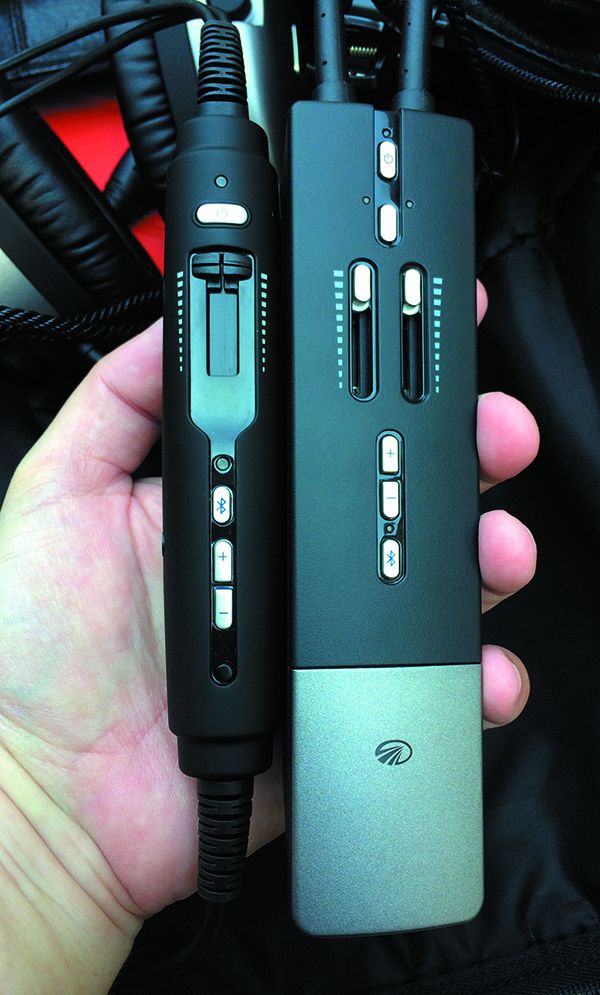MORE ON HEARING AIDS
I am writing about your hearing aids for pilots article in the March 2021 issue of Aviation Consumer magazine.
I have what I think is fairly typical age-related hearing loss, which kicks in at about 2 kHz, and is about 40 or more dB down by about 4 kHz. (You can get tested for free by Costco, incidentally, which can be very helpful to know what your individual loss is.)
That sort of hearing loss primarily affects decoding consonants. So I have trouble with soft-spoken people, movies and television unless there’s high-end boost, or I’m wearing hearing aids.
I now have high-end hearing aids by Signia, which work pretty well, but haven’t found them helpful when flying. However, I did find a great headset solution from Lightspeed, which strangely is no longer made, but perhaps can be changed if enough people requested it. The PFX noise-canceling model, manufactured by Lightspeed until a few years ago, has several options that can be accessed by a smartphone via the app. Two of the settings in this app affect speech intelligibility. One is a treble boost, and one is for speech clarity. I have both set at max, and it makes all the difference in the world for my hearing loss when it comes to understanding ATC in flight.
You may be able to pick up a used PFX on eBay, and if you have hearing loss like I do, I highly recommend them. The only downside to the PFX is the main control module—it is much larger (nearly twice the size) than on the ones on other Lightspeed models. It’s helpful to have a method of hanging it (it comes with a clip for hanging) or stashing it someplace. I’ve found that the four required AA batteries don’t last more than a few long flights. But if you rotate high-quality rechargeables, it’s not hard to deal with.
Stephen Gagné – Ashland, Oregon
There are lots of electronics packed in the Lightspeed PFX control module, which is the larger one shown in the left photo. We thought the PFX was a decent performer during several ANR headset trials, and liked them partly because of the app-configurable audio settings. But in a crowded market of ANR headsets, they just weren’t a good seller so Lightspeed dropped them. If you struggle with hearing aids in the cockpit and can find a set on the used market (and the price is right), we think they may be worth a try.
TRANSCEIVER SHOOTOUT
Thanks for your article on the Icom and Sporty’s comm transceiver shootout in the March 2021 Aviation Consumer. I have been using an Icom A25N as my primary radio in a non-electrical-system Taylorcraft since the new radio came out.
With an external antenna, it performs exceptionally we’ll and the audio quality is very clear. The unit’s menus are easy to navigate and the programmable memory for frequently used channels makes it even easier. I find the battery life of the rechargeable pack to be pretty respectable, without having the need to recharge it every flight or two, unlike my previous radio.
That said, I would strongly consider the A25C over the flagship A25N model as you suggested. In a few years of use, I have yet to use any of the features offered by the A25N over the A25C, as they just are not that compelling. Most of the features related to Bluetooth functionality and flight planning are better handled on an iPad or similar device running your favorite navigation app.
One benefit of the A25N is that the built-in GPS can function as an external GPS source when paired to an iPad running a navigation app. In my case I use an Appareo Stratus for this function, and get the added function of ADS-B In—something the Icom radio doesn’t have. But if someone does not have an ADS-B receiver and still would like GPS positional source for the tablet, the A25N can do it.
Overall I am very happy with it and so far it has worked well. Still, I think in most cases the A25C is the better unit for the price.
Stu Kerber – via email


